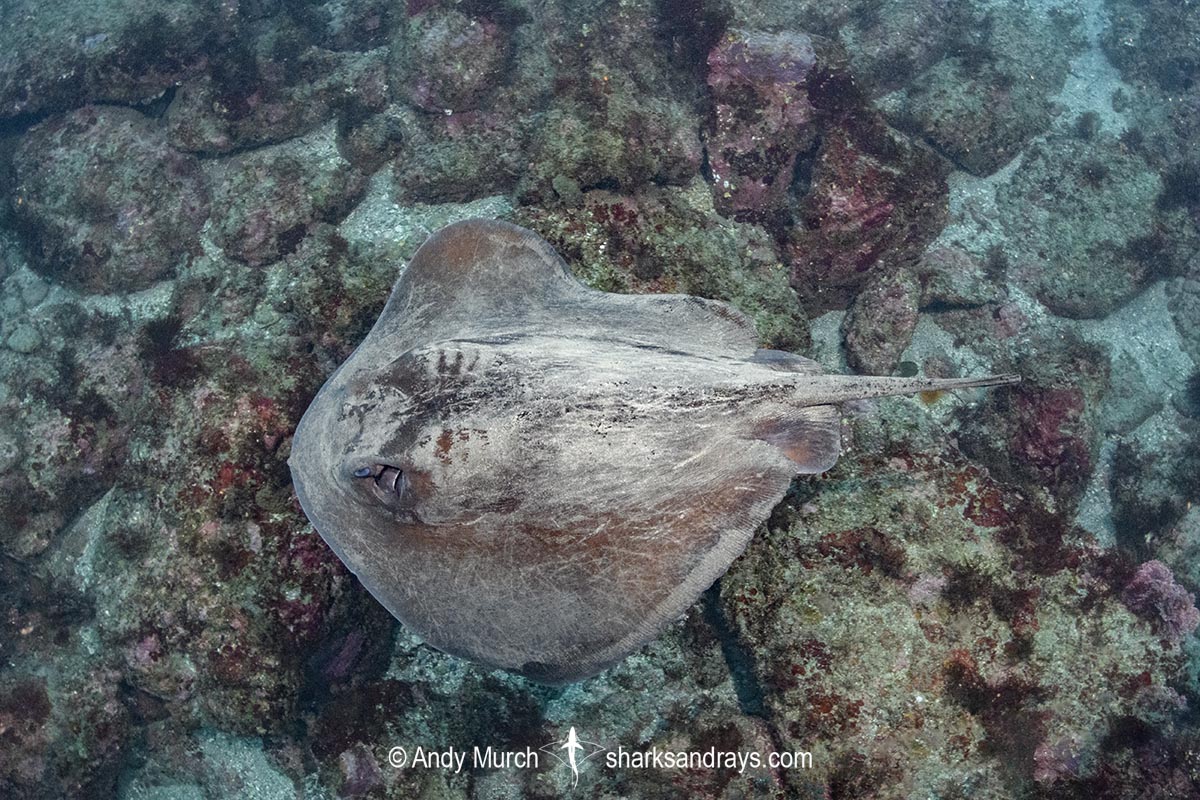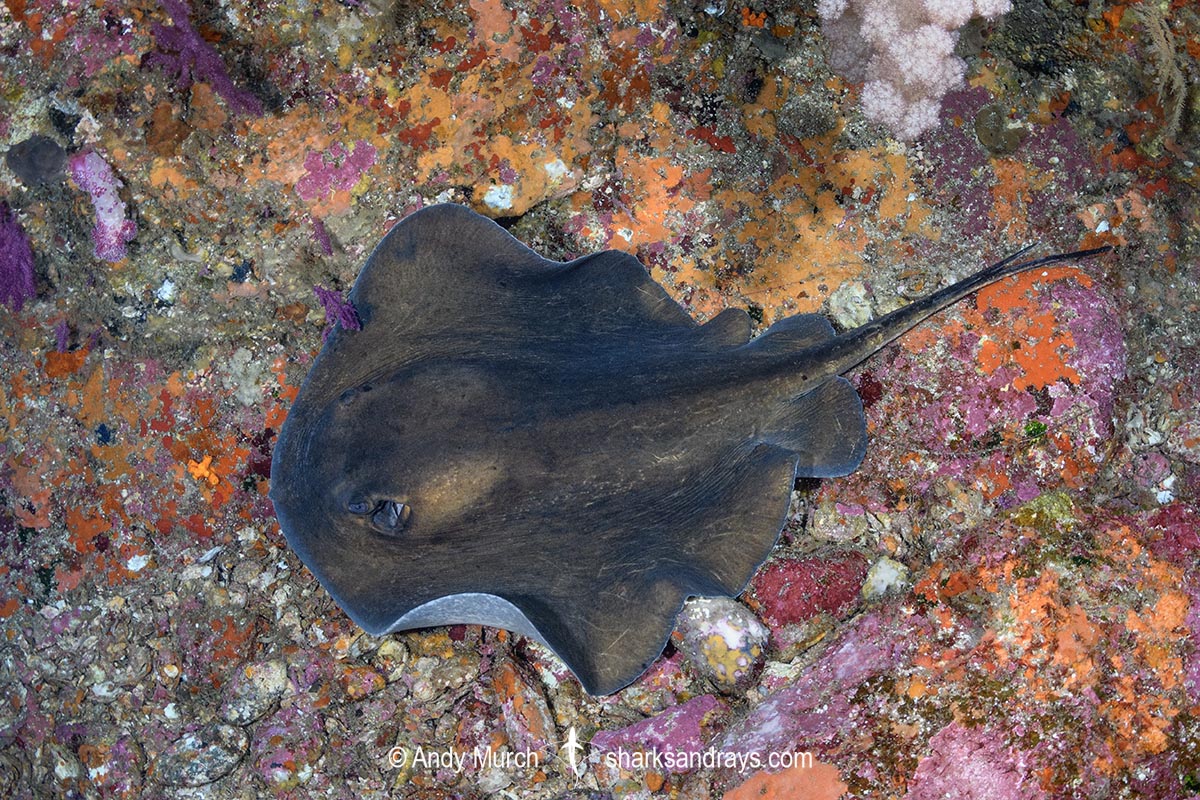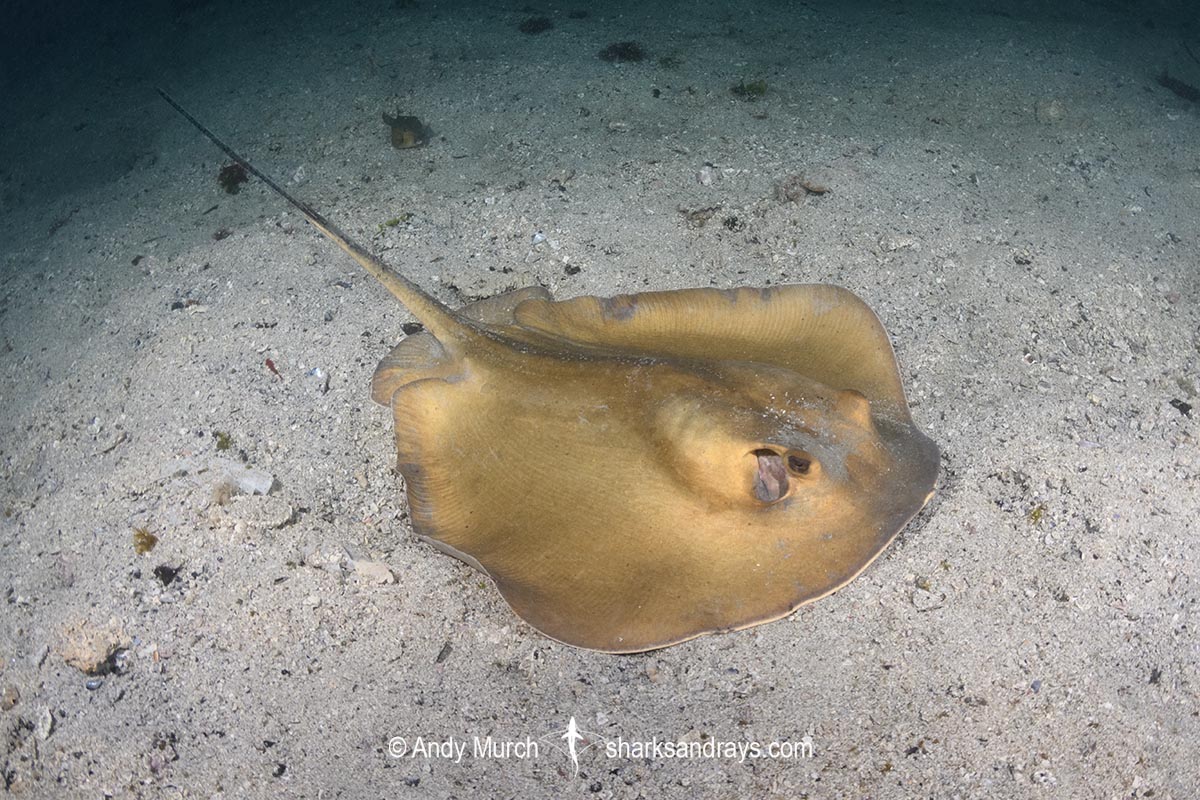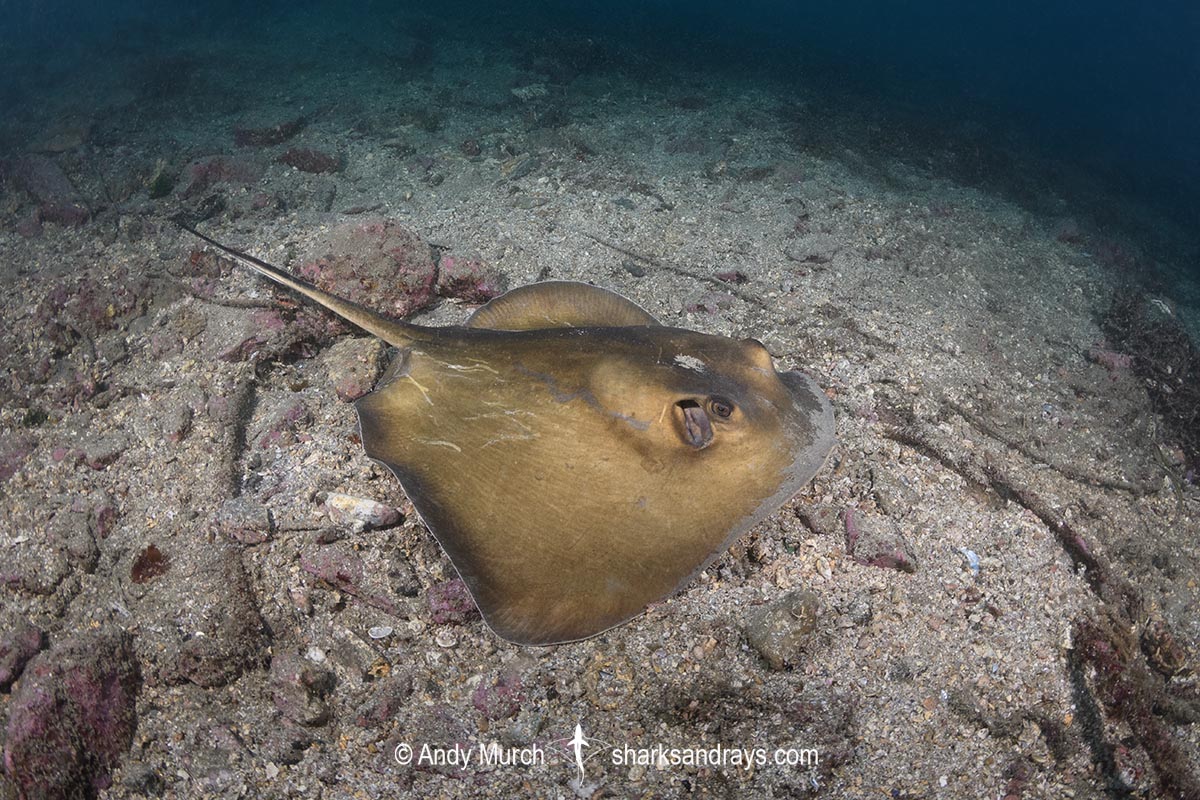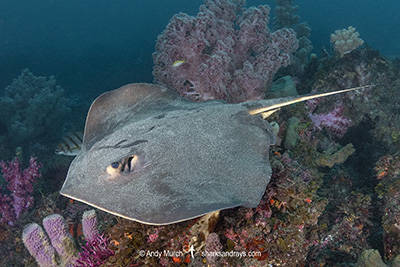Common name(s)
Izu Stingray.
Binomial
Hemitrygon izuensis.
Synonyms
Identification
A small to medium sized stingray with a relatively thick body and a kite-shaped disc that is slightly wider than long; disc width approximately 1.1-1.2 x length. Snout very short, obtusely angular to rounded, with a small apical lobe (protruding tip). Anterior margins of disc almost straight or weakly convex. Pectoral fin apices angular or tightly rounded. Pelvic fins have broadly rounded apexes.
Eyes small. Snout length 1.5 x combined eye and spiracle length.
Mouth broad, with 5 oral papillae. Deep labial furrows around mouth. Lower jaw convex. Short, wide, skirt shaped nasal curtain with a weakly fringed margin. Nostrils narrowly oval shaped.
2-6 tail thorns anterior to tail sting in adults. No denticles or thorns on disc.
Tail broad-based, somewhat depressed at base, tapering to tail sting, then filamentous to tip. Tail length (when intact) 0.8-1.1 x disc width. Ventral finfold short. Dorsal finfold short and low. 1-2 tail stings usually present.
Colour
Dorsum and tail base light brown to dark brown, often darker towards centre of disc. Sometimes finely mottled. Tail beyond caudal sting black. Ventrum white or pale with a golden yellow margin posterior to mouth. Ventral surface of tail and fin folds dusky anteriorly fading to black towards the tip.
Size
Maximum disc width 73cm. Disc width at birth unknown.
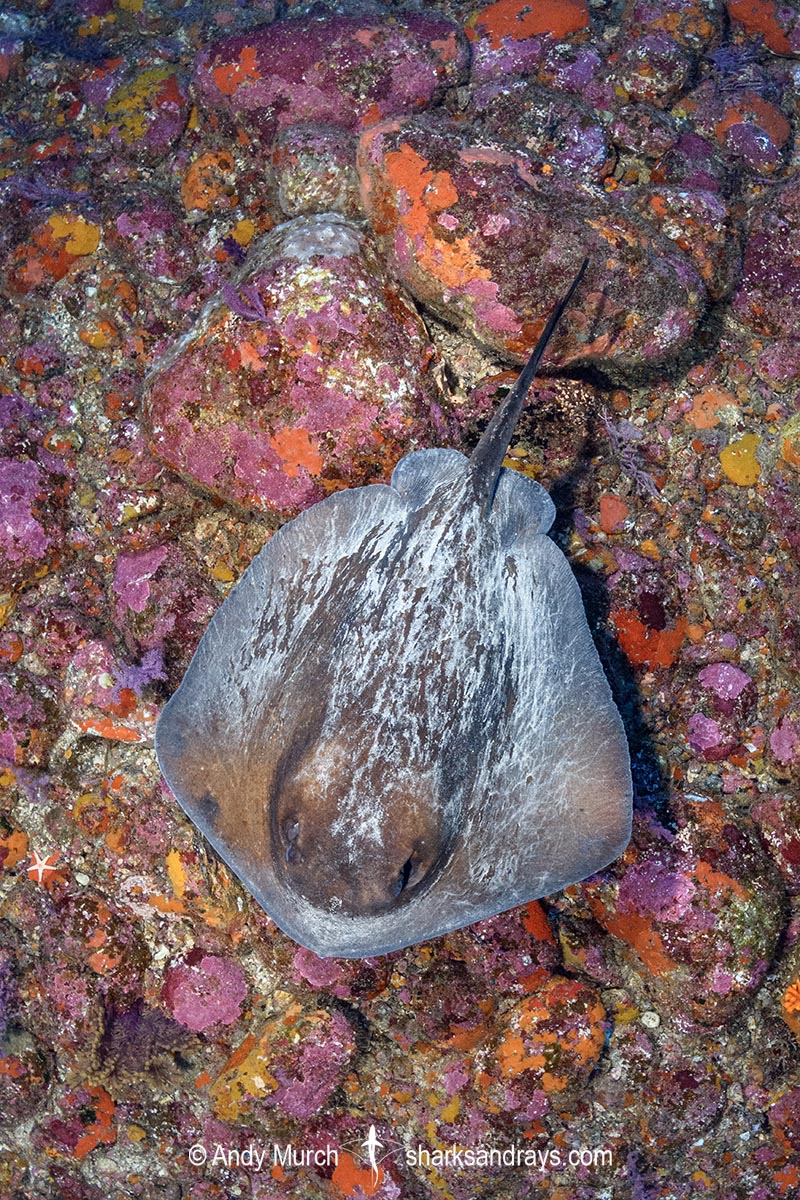
Conservation Status
VULNERABLE
In Japan, Hemitrygon izuensis is a bycatch in trawl, set net, gillnet, and longline fisheries, but it is mostly discarded.
The Izu Stingray is an uncommon species, but it is is not clear if it is naturally rare or if the present paucity of sightings is due population decline. In the Japan Exclusive Economic Zone landings data shows a decline of 92% in the last three generations (36 years). However, trawl fishing pressure has also lessened in this area. It is estimated that the Izu Stingray has undergone an overall population reduction of 30–49%.
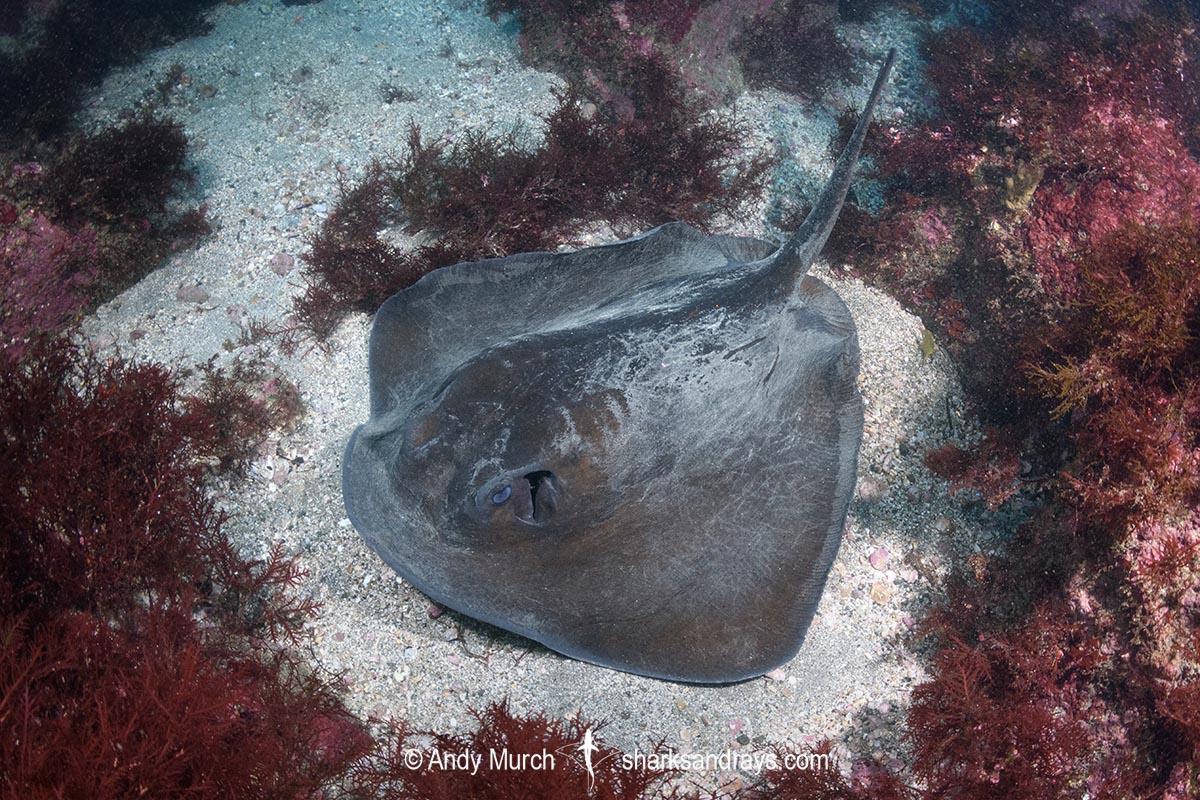
Habitat
Warm temperate / sub-tropical seas. On soft substrates, sometimes adjacent to reefs. Depth listed as 10-25m, but on the Izu Peninsula, this stingray occurs from 2m to at least 42m (personal observation). One record from the East China Sea at 180m.
Distribution
Restricted to the coastal regions of Japan.
Reproduction
Viviparous, but poorly known.
Diet
Diet unknown
Behavior
Possibly diurnal. I found an Izu stingray foraging at midday at 42m off Mikomoto Island, and another swimming over rocks in a shallow bay in Kawazu.
Reaction to divers
Swims slowly away. Will bolt when approached closely.
Diving logistics
Although uncommon everywhere, the southeast coast of the Izu Peninsula appears to be a fairly good spot to look for Izu Stingrays. I found one at Mikomoto Island after many dives there, and another during a shore dive at Kawazu, north of Shimoda. The latter was swimming across a shallow bay directly in front of the dive shop.
What’s new
View our full list of updates
Similar species
Red Stingray Distinguished by longer, more pointed snout and prominent thorns along midline of disc and tail.
Yantai Stingray Distinguished by longer, pointed snout and pale patches above eyes and spiracles.

